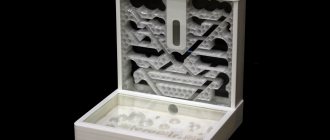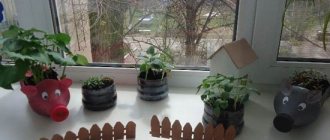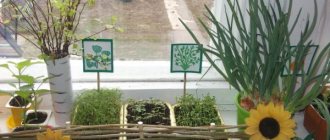I am a researcher in the senior group “The Mystery of Sound”
The topic of our research project in the senior group is “Secrets of Sound.”
Relevance.
One day a mechanic came to our group to hang a shelf. He needed to make a hole in the wall with a drill. When he turned on the drill, a small sound was heard. But when he started drilling into the wall, the sound became stronger. And we wondered why the sound changed.
Target.
We decided:
- Find out whether the appearance of sound directly depends on vibration.
- Is it possible to make an object yourself that makes sounds using vibrations?
Hypothesis.
We assumed that everything that vibrates makes sound. And these sounds are audible to the human ear.
We asked.
- We asked the mechanic, “Why did the sound change?” The mechanic told us that it was due to vibration.
- I became interested, and my dad helped me find information on the Internet that sound comes from vibration.
- The teachers said that vocal cords that vibrate help us talk.
We went to the temple and the bell ringer showed us how the bell sounds. The tongue hits the wall of the bell, the wall vibrates and the bell rings.
In the group we conducted experiments:
- They put a sheet of paper on the speaker, poured strips of colored rice and turned on the music. The speaker began to vibrate and make a sound. The vibration caused the rice to jump and mix.
- Nuts were placed in the balloon and it was inflated. We started making circular movements with the ball. The nuts begin to move inside the ball, making a whistle.
- We took the tambourine and knocked on it. When struck, the metal plates begin to vibrate, touching adjacent plates, and creating sound.
- Holding the ruler in our hand, we bent the tip of the ruler and sharply released it; it began to vibrate, but we did not hear any sound.
Then we took a ruler and put it on the table. One end of the ruler was held with the hand, and the other end was bent and sharply released. It vibrated and made a sound when it hit the table.
- The jelly was poured into a mold; when it froze, it was placed on a plate. They hit it with a spoon. It began to vibrate, but we cannot hear the sound.
- In windy weather, we opened the window slightly; the wind began to move the tulle, but we did not hear any sound.
- Klim blew on an ostrich feather, ran his fingers over it, it moved, but we did not hear a sound.
I brought the microphone to the tulle and the feather, to the jelly and we heard the sound.
Conclusion.
As a result of the experiments, we made the following conclusions:
Our hypothesis was partially confirmed. When an object vibrates, it makes a sound, but not all sounds can be heard by the human ear.
We made our own guitar out of cardboard. When I run my fingers along the strings, vibration occurs and sound appears.
Thank you for your attention!






